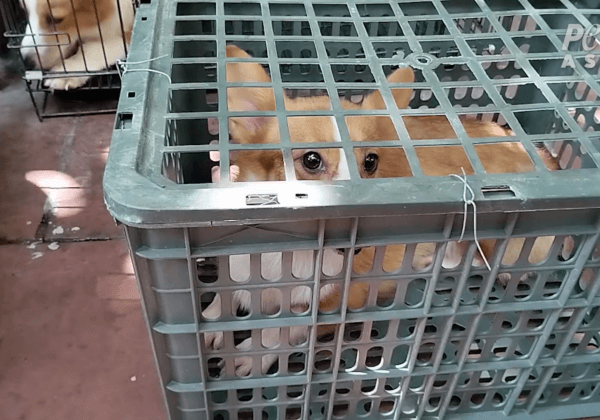Crates and Cages: Prison for Dogs
 Sadly, it’s quite common for people to use crates or cages to house their dogs for 12, 15, or even 24 hours a day. The hours add up quickly: Eight hours or more are spent in solitary confinement during the day while people are at work, and those are often coupled with another eight hours during the night. Crates and cages are cramped, lonely places. This long, cruel daily sentence for “man’s best friend” makes for a miserable life. A crate or a cage is a prison.
Sadly, it’s quite common for people to use crates or cages to house their dogs for 12, 15, or even 24 hours a day. The hours add up quickly: Eight hours or more are spent in solitary confinement during the day while people are at work, and those are often coupled with another eight hours during the night. Crates and cages are cramped, lonely places. This long, cruel daily sentence for “man’s best friend” makes for a miserable life. A crate or a cage is a prison.
Dogs need physical activity and companionship, just like humans. We wouldn’t want to be restrained to our bed all day, every day, barely able to move, nor would it be healthy. Confining dogs often results in severe psychological, emotional, physical, and behavioral problems. Dogs require a variety of physical activities for their overall health. Spending time with your dog walking, running, swimming, or playing structured games, such as fetch, for 30 minutes at least twice a day is a good habit to get into. It’s not just exercise for your dog—you will also get the added benefit of a workout and some fun!
Many people think that using a crate or a cage is a good training technique, but in fact, no learning can take place in isolation. The only thing that a dog can learn while confined to a crate is to fear the outside world. Extreme boredom, profound loneliness, anxiety, painful joint stress, and muscle atrophy are all common results of spending prolonged periods in cages and crates. Simply being able to move around freely is something that everyone should have the chance to enjoy!
If you’re worried about letting your dog loose in the house while you’re not home, spend time teaching him or her some rules. Be sure to housetrain your dog and always reward good behavior. If your dog likes to chew things, make sure that he or she has plenty of toys to occupy the time while you’re gone, and puppy-proof your house to be on the safe side. You can use dog gates to section off certain parts of the house. Just don’t leave your dog alone for too long without having someone stop by to give him or her a bathroom break and a little walk. Leaving your dog in a crate will not help him or her learn how to behave—it will only create and exacerbate behavioral problems and postpone the arrival of the day when they will have to be addressed.
By saying “No” to crates and cages, you are not only making your dog’s life better but also enriching your own with the trusted companionship of a healthy, happy dog!
Posted by Edwina Baier









